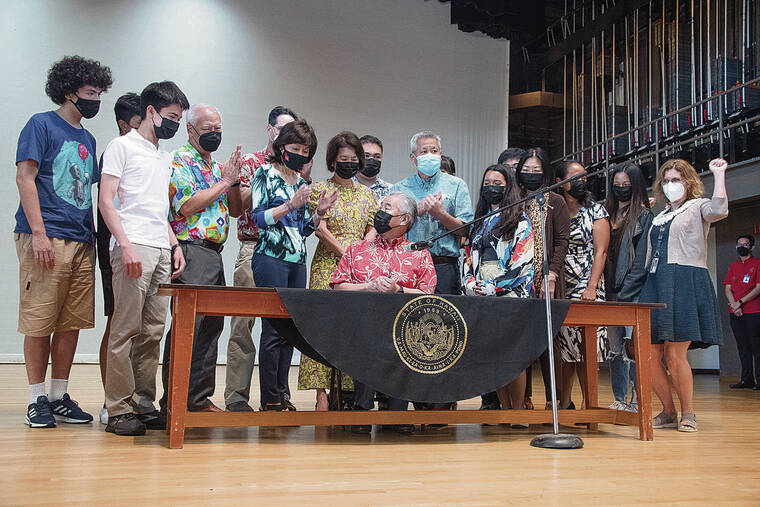This week, Hawaii’s student journalists scored a major victory for the First Amendment’s guarantee of freedom of speech and of the press.
Gov. David Ige — himself a former high school journalist — on Monday signed the Hawaii Student Journalism Protection Act, giving high school and college students broad control over the content of school-sponsored student media, similar to that enjoyed by professional journalists.
The act limits the ability of school administrators to censor or punish students for their decisions regarding news, opinions, features and advertising content. Likewise, student media advisers cannot be punished for protecting those rights.
It’s an important advancement. Student journalists learn to express themselves within the disciplined boundaries of the profession — to be as accurate and fair as possible, to correct mistakes promptly, to speak fearlessly and honestly about the issues — and to be accountable for it all.
These are valuable skills to have when navigating the anything-goes swamp of social and hyperpartisan media, where it can be difficult to distinguish fact from fiction. In fact, basic media literacy should be taught to all students, who, after all, spend a lot of time in that swamp.
Of course, the First Amendment guarantees are not absolute. Similar to limits in the professional world, student journalists have to avoid libel, invasions of privacy, obscenity, violations of laws or a “material and substantial disruption” to the school.
With Ige’s signature, Hawaii wisely joined 15 other states in exercising its right to expand protections beyond what the Constitution requires.
The prevailing legal view, expressed by the U.S. Supreme Court’s 1988 decision in Hazelwood School District v. Kuhlmeier, said that school officials did not violate students’ First Amendment rights when they blocked the publication of certain articles in a student newspaper.
The court said that the paper was not a “public forum,” and that student speech in a school-sponsored medium could be censored if it was inconsistent with the school’s “basic educational mission.” Free-speech advocates say Hazelwood’s standards are too ambiguous, allowing almost limitless opportunities for stifling student speech.
They are correct. A student newspaper, yearbook or website cannot be a disguised mouthpiece for school administrators. They should be what they claim to be: the true work and expression of students speaking freely, under the full protection of the First Amendment.

